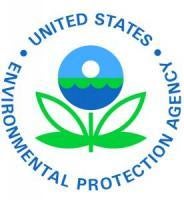Acting on data from multiple scientific studies in Puerto Rico that show that Zika is spreading rapidly and is a major risk to pregnant women and their fetuses, the Centers for Disease Control and Prevention (CDC) and the Environmental Protection Agency (EPA) recommend the people and the government of Puerto Rico consider implementing aerial spraying as part of an integrated mosquito control program.
“Multiple independent data sources indicate that at current trends thousands of pregnant women in Puerto Rico will catch Zika,”said CDC Director Tom Frieden, M.D., M.P.H. “The continental United States has been using aerial spraying for decades to reduce mosquito populations, and we urge the people of Puerto Rico to consider using the same proven and safe tactic.”
“Our recommendations for mosquito control in Puerto Rico are the same as our recommendations for mosquito control elsewhere in the United States—integrated pest management,” said EPA Administrator Gina McCarthy. “An integrated and comprehensive approach includes reducing places where mosquitoes lay eggs, keeping them out of houses, and reducing the populations of both larval and adult mosquitoes by treating areas with EPA-approved products. We strongly encourage the people of Puerto Rico to consider aerial spraying as this approach is safe for people and a proven way of controlling the spread of mosquitoes that transmit diseases from Zika to dengue to chikungunya.”
CDC, EPA support for comprehensive integrated mosquito control
To assist the Commonwealth in ramping up their comprehensive approach, the CDC and EPA will:
-
Support Puerto Rico in developing its own integrated vector management unit, like other parts of the United States with significant risk for viruses spread through mosquitoes. CDC will provide initial funding and technical support for the unit; EPA will provide technical and regulatory guidance.
-
Support implementation of an integrated mosquito management program in Puerto Rico, including new dedicated funding of more than $500,000 for the safe and environmentally sound disposal of discarded tires, where mosquitoes lay eggs, as well as support for municipalities to systematically reduce other sources of standing water where mosquitoes lay eggs, such as broken septic tanks, cisterns, storm drains, and water meters.
-
Support for community application of adulticides to quickly kill adult mosquitoes and larvicides to effectively reduce young mosquito populations.
Aerial treatment of areas with products that rapidly reduce both larval and adult mosquitoes is a proven way to limit the spread of the mosquitoes that carry the Zika virus. Other parts of the United States have seen success in quickly reducing the numbers of mosquitoes—and risk of disease—when using such aerial treatments. Repeated aerial applications of insecticide can substantially reduce mosquito populations.
Studies earlier this year demonstrated that mosquitoes in Puerto Rico are resistant to all aerial formulations of pyrethroid insecticides, making use of a different product necessary. The product being considered, Naled, is routinely applied by air to about 16 million acres within the U.S. mainland, as well as for mosquito control after hurricanes and floods. In Florida alone last year, approximately 6 million acres were treated with Naled, including the cities of Miami and Tampa. In 2004, Naled was used to treat 8 million acres in Florida after Hurricanes Charley, Jeanne, and Frances. Naled previously was used in Puerto Rico in 1987 and it is effective at controlling the mosquitoes that spread Zika, dengue, and chikungunya viruses.
CDC information about control of mosquitoes that can spread disease is available here including information about aerial spraying in Puerto Rico. EPA information about the specific insecticides proposed for use in Puerto Rico is available here.
On July 1, 2016, CDC awarded Puerto Rico $5 million as part of $25 million in funding to states, cities, and territories to support efforts to protect Americans from Zika virus infection and associated adverse health outcomes, including microcephaly and the other serious birth defects. Puerto Rico can use these funds to identify and investigate outbreaks, coordinate government and non-government (healthcare) response efforts, and identify and connect to community services families affected by Zika.
CDC and EPA are committed to continuing to support efforts in Puerto Rico to inform communities and answer questions about the effectiveness of integrated mosquito control approaches to prevent mosquito-borne diseases such as Zika.



 />i
/>i

